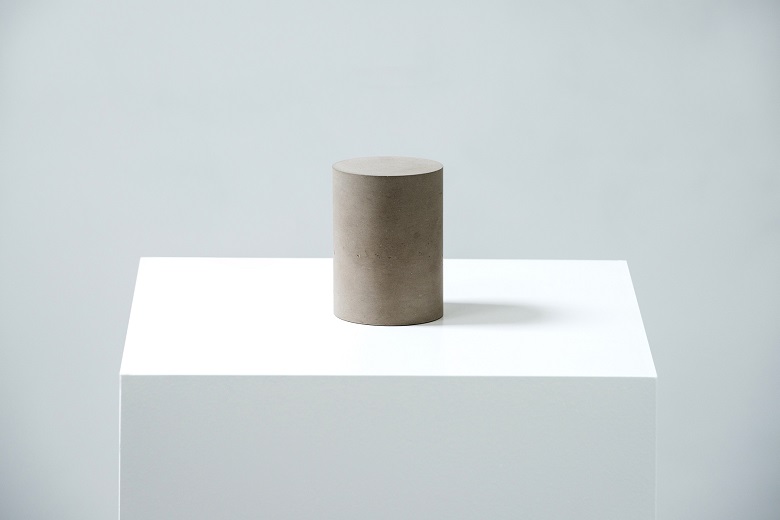|
|
| home | exhibitions | interviews | features | profiles | webprojects | archive |
|
Alastair Mackie Coline Milliard
Alastair Mackie’s sculptural practice is one of contrasts. It is as labour-intensive as it is formally effortless, as grounded in ideas of nature as it is in the intrinsically human struggle to define a role within the environment; it is as intellectually ambitious as it is aesthetically understated. Mackie grew up in a coastal agricultural community, where he resettled more recently, and that landscape of his childhood has played a key role in shaping his vocabulary. Organic elements (stone, trees, sea shells) are meticulously rearranged and transformed in a knowingly quixotic attempt to order life’s primordial chaos. Each work is something of an enigma, enriched by the loaded associations of its material and the story behind its making. For The Elimination of Non-priorities (2017 -below), Mackie spent eight hours a day for seven days picking up cowries on a Cornish beach. Labour is here performatively presented in archetype: a task repeated again and again over a given period of time. The reward is a bag of cowries, historically the most common form of shell money. Mackie then placed each day’s harvest in the regularly carved cavities of a limestone slab. Together, the resulting seven tablets are redolent of an ancestral counting device – although how it might actually function remains elusive. The alluringly abstract piece prices up a human cost. Nothing is said of the absurdist task it required: there’s no trace of the substantial effort put into sorting seashells from pebbles, nose in the sand, for a fifty six hours. And yet knowing some of this deliberately procedural process gives the piece a palpable depth. The art object escapes the finished product to encompass the cycle that led to its creation.
Mackie operates by reduction; materials are pared down to their core. In his work, process dictates form, no matter how poetic or Romantic the piece’s origin. Mackie’s Smoking Mirror project (work in progress) involves collecting a naturally occurring volcanic glass, obsidian, from the edges of a crater, and melting it in an industrial furnace to produce a sheet of architectural glass. Obsidian has been used by various civilizations, including the Aztecs, who believed it gave access to the underworld. Mackie’s material undergoes a complex transformation process but emerges as itself: from glass to glass. Likewise, Epitaph (2014)sees a sandstone boulder from the quarry of Hardwick Hall carved into an exact copy of itself, only two millimeters smaller. The raw model and its human-engineered copy are almost identical but for the machined tool-path scaring the latter’s surface. In both cases, what’s in play isn’t the representation of a subject-material, but a “re-presentation” of sources, whether familiar or distant – a call for reassessment.
For Mud Form (2014 - above) Mackie meticulously washed a Richard Long “mud drawing” off the wall of a museum, and compressed it into a cylinder using a custom-made water-filtration device. The sculpture has the disarming simplicity of an archaic artefact. It defies interpretation. Somewhere in the compacted mud, there’s an echo of the celebrated land artist’s River Avon but buried even deeper are traces of the longing to connect to one’s patch of earth, and of the hubris of believing that it can be fashioned to fit our needs. As often in Mackie’s sculpture, the starkness of the form grants the object a timelessness that almost obfuscates its absolute contemporaneity. Yet this body of work talks of the here and now. With quiet strength, it reaffirms that, millennia after our arrival, the question of humanity’s place on the planet has lost nothing of its urgency.
Alastair Mackie, who lives and works in North Cornwall, has a solo show at Copperfield SE1 opening on 8.3.19 |
|
|


